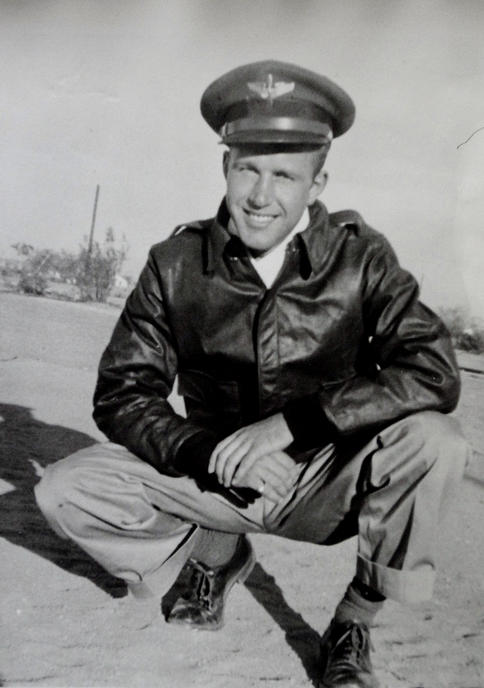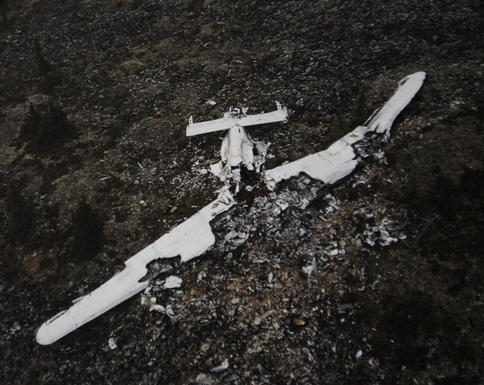Harold E. Hoskin
Second Lieutenant, U.S. Army Air Forces
Service # 0-736523
Weather Testing Detachment, Air Transport Command
Entered the Service from: Maine
Died: 21-Dec-43
Missing in Action or Buried at Sea
Tablets of the Missing at Honolulu Memorial
Honolulu, Hawaii
NEWS RELEASES from the United States Department of Defense
No. 1083-07 IMMEDIATE RELEASE
September 5, 2007
Airman Missing from WWII is Identified
The Department of Defense POW/Missing Personnel Office (DPMO) announced today that the remains of a U.S. serviceman, missing from World War II, have been identified and will be returned to his family for burial with full military honors.
He is Second Lieutenant Harold E. Hoskin, U.S. Army Air Forces, of Houlton, Maine. He will be buried Friday in Arlington National Cemetery near Washington, D.C.
Representatives from the Army met with Hoskin’s next-of-kin to explain the recovery and identification process, and to coordinate interment with military honors on behalf of the Secretary of the Army.
On December 21, 1943, Hoskin was one of five crewmen on board a B-24D that departed Ladd Field in Fairbanks, Alaska, on a cold-weather test mission.The aircraft never returned to base and it was not located in subsequent search attempts. The following March, one of the crewmen, First Lieutenant Leon Crane, arrived at Ladd Field after spending more than two months in the Alaska wilderness. He said that the plane had crashed after it lost an engine, and Crane and another crewmember, Master Sergeant Richard L. Pompeo, parachuted from the aircraft before it crashed. Crane did not know what happened to Pompeo after they bailed out.
In October 1944, Crane assisted a recovery team in locating the crash.They recovered the remains of two of the crewmen, First Lieutenant James B. Sibert and Staff Sergeant Ralph S. Wenz. Hoskin’s remains were not found and it was concluded that he probably parachuted out of the aircraft before it crashed.
In 2004, the Joint POW/MIA Accounting Command (JPAC) received information from a National Park Service Historian regarding a possible WWII crash site in the Yukon-Charley Rivers National Preserve, Alaska.The historian turned over ashes believed to be the cremated remains of the crew, however, it was determined they contained no human remains.In 2006, a JPAC team excavated the site and recovered human remains and other non-biological material, including items worn by U.S. Army officers during WWII.
Among other forensic identification tools and circumstantial evidence, scientists from JPAC and the Armed Forces DNA Identification Laboratory also used mitochondrial DNA in the identification of Hoskin’s remains.
For additional information on the Defense Department’s mission to account for missing Americans, visit the DPMO Web site at www.dtic.mil/dpmo or call (703) 699-1169.
Courtesy of the Portland Press Herald
By ELBERT AULL Staff Writer
September 5, 2007
John Hoskin remembers what his family thought after his older brother’s plane failed to return from a test flight over the Alaskan wilderness during World War II.
“We all figured he was going to walk out some day,” Hoskin said.
But Second Lieutenant Harold Hoskin, an Army Air Corps pilot, never walked out of the Yukon.
A crew member did survive, however, and his incredible return set off a chain of events that concludes this week when Harold Hoskin’s remains are buried at Arlington National Cemetery more than 60 years after his death.
“He’s able to get the military honors he deserves,” said Mary Hoskin, John’s wife.
It will be the fourth time this year that military officials have used DNA analysis to identify and return the remains of a missing Mainer to the family.
The latest discovery came after a two-year investigation of a crash site in Alaska’s remote Yukon-Charley Rivers National Preserve.
What researchers found helped dust off a chapter of Hoskin family history that was incomplete and seldom-discussed after the war.
Family members said it helped give a daughter the first true glimpse of her father’s character and brought an uncle closer to his niece.
Harold Hoskin was a 22-year-old Houlton native with a child on the way and dreams of becoming a doctor when he flew a B-24 bomber out of Ladd Field in Fairbanks, Alaska, on December 21, 1943.
Hoskin led a crew of five assigned to test the bomber’s propeller systems in cold weather. An engine malfunctioned during the flight and sent the plane into a downward spiral, according to military documents.
“The thing started falling apart in the air,” said John Hoskin, 83, a retired Baptist minister who lives in Gorham. The bomber crashed on a remote mountain.
Search teams could not find the wreckage for months. Then Second Lieutenant Leon Crane, one of the five crew members, returned to the base after wandering in the wilderness and living off of food stores from trapper’s cabins.
Crane led searchers to the crash site, where they found the remains of two other crewmen. But they never found Harold Hoskin’s body and assumed he was the last crew member to parachute from the bomber.
But Harold Hoskin never left the plane. Former National Park Historian Douglas Beckstead convinced military investigators to return to the site after he discovered several artifacts — including parachute harness buckles — at the largely intact crash site three years ago.
The team recovered bone fragments from the plane wreckage last summer. Beckstead contacted John Hoskin, the pilot’s only remaining sibling, and asked for a DNA sample.
The results were announced in March. “It was a match,” John Hoskin said.
The find rekindled John Hoskin’s curiosity, which had dimmed since he and his wife tracked down Crane, the man who wandered through the Alaskan wilderness after the crash, at his Philadelphia home in the early 1990s.
Crane had little to say about the event and has since died, they said.
John Hoskin reconnected with his niece, and convinced her to look through love letters his brother sent to her mother during the war. She learned that Harold Hoskin was in a zoology laboratory at Bates College in Lewiston when he learned Japan had attacked Pearl Harbor. He left college and joined the Army almost two months later, at the end of January 1942.
Harold Hoskin married his girlfriend, Mary, days after he finished pilot training a year later.
The couple eagerly awaited the birth of their first child at the time of the crash. They even settled on a name, Dick, because they expected a boy. Mary Hoskin gave birth to their daughter five months later.
In the meantime, she boxed up every letter from her husband, could not discuss his death and did not remarry for more than two decades. She died in 2004.
“Any time I ever asked her about it, she would cry,” said Joann Goldstein, 63, of Punta Gorda, Fla., their daughter.
Earlier this summer, Goldstein opened the box of more than 50 letters at the urging of family members.
Two lines from the stack of notes stood out:
In a letter to his mother on his way to officer training, Harold Hoskin called World War II “the most important war we’ve ever had to fight.”
The other, written to his wife shortly after he got his assignment in Alaska, said, “It looks as though Dick will see his proud papa, because there is no combat involved in this job.”
Harold Hoskin then asked his wife if she would be ashamed of him if he never saw combat.
When asked what her mother would think of the coming burial ceremony, Goldstein said, “I think she would be honored that he’s being honored.”
Harold Hoskin is scheduled to be buried with full military honors Friday at Arlington National Cemetery. A remembrance ceremony is scheduled for Tuesday at the Free Baptist Church in Limington.
Michael Robert Patterson was born in Arlington and is the son of a former officer of the US Army. So it was no wonder that sooner or later his interests drew him to American history and especially to American military history. Many of his articles can be found on renowned portals like the New York Times, Washingtonpost or Wikipedia.
Reviewed by: Michael Howard


